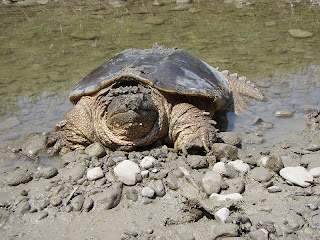 |
| (Image Source) |
Class : Aves
Order : Phoenicopteriformes
Family : Phoenicopteridae
Genus : Phoenicopterus
Species : roseus
Height : 43-60in (110-150cm)
Weight : 4.5-9lbs (2-4kg)
IUCN Status : Least Concern
The Greater Flamingo is both the largest, and the most widespread of all the Flamingo species. They are found in wetland parts of Africa, Asia, Europe, and the Americas, living in large colonies that can number as many as 200,000 birds. These colonies can be so large that breeding pairs develop special calls just so they can locate each other.
 |
| (Image Source) |
Greater Flamingo nests are pretty weird looking. They pile up mud and make in indentation in the top for the single egg laid. These eggs hatch after about a month, and within a week the chicks join a Creche with other young Flamingos. Chicks return to the nest to be fed via regurgitation, and parents and chicks are able to find each other based on their calls. Greater Flamingos mate for life.
Greater Flamingos are quite long lived. They often don't breed till they are round 10 years old, and can live as long as 40 years in the wild. One Flamingo from the Adelaide Zoo has lived at least 75 years.
 RSS Feed
RSS Feed Twitter
Twitter 13:04
13:04
 booker2o73lister58
booker2o73lister58








































